What are the types of theatre stages and auditoria?
Theatres have evolved with different internal layouts according to the types of productions presented there. The most common types of stage arrangements are listed below.
Proscenium stages
Proscenium stages have an architectural frame, known as the proscenium arch, although not always arched in shape. Their stages are deep and sometimes raked, meaning the stage is gently sloped rising away from the audience. Sometimes the front of the stage extends past the proscenium into the auditorium. This is known as an apron or forestage. Theatres containing proscenium stages are known as proscenium arch theatres and often include an orchestra pit for live music and a fly tower for the movement of scenery and lighting.
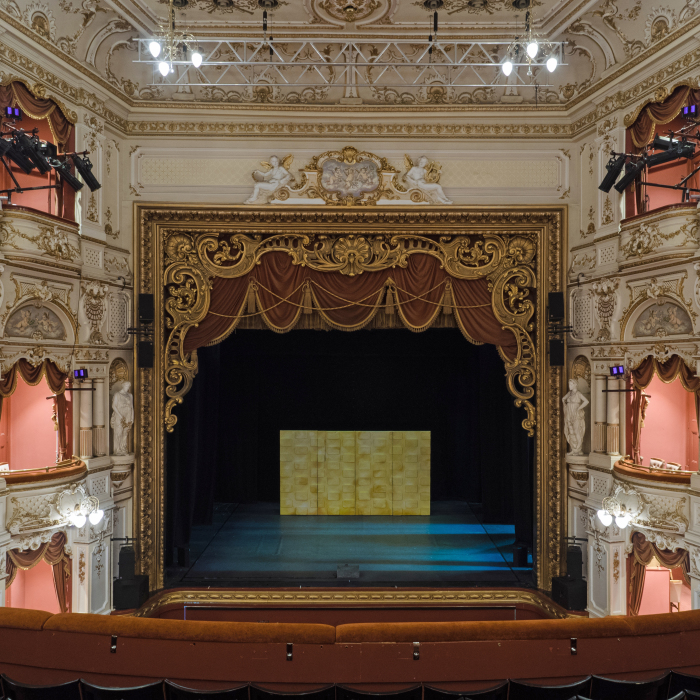
The proscenium arch at Sheffield Lyceum.
Thrust stages
As the name suggests, these project or ‘thrust’ into the auditorium with the audience sitting on three sides. The thrust stage area itself is not always square but may be semi-circular or half a polygon with any number of sides. Such stages are often used to increase intimacy between actors and the audience.
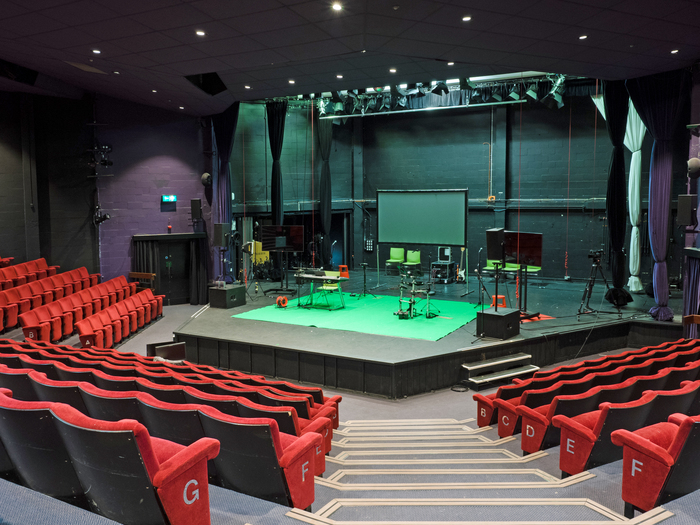 The thrust stage at the Gulbenkian, University of Kent.
The thrust stage at the Gulbenkian, University of Kent.
Theatres in-the-round
These have a central performance area enclosed by the audience on all sides. The arrangement is rarely ‘round’: more usually the seating is in a square or polygonal formation. The actors enter through aisles or vomitories between the seating. Scenery is minimal and carefully positioned to ensure it does not obstruct the audience’s view.
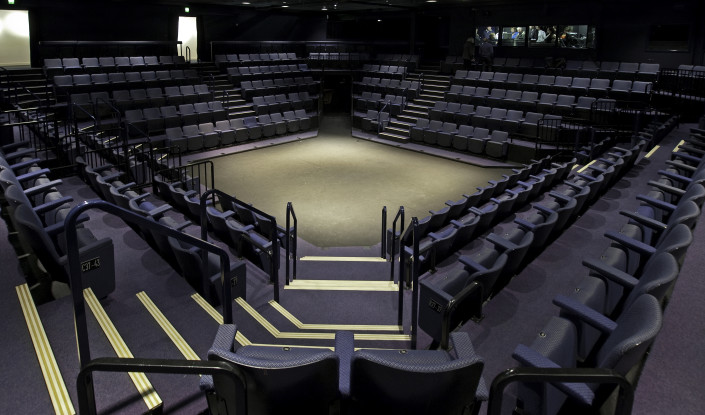 In-the-round auditorium at the Stephen Joseph Theatre, Scarborough.
In-the-round auditorium at the Stephen Joseph Theatre, Scarborough.
Arena theatres
Arena theatres are large scale auditoria and have a central stage area with audiences on all sides, similar to theatres in-the-round. The stage area is usually rectangular, more like a sports arena, with tiered seating.
Black-box or studio theatres
These are flexible performance spaces which when stripped to their basics are a single room painted black, the floor of the stage at the same level as the first audience row. Usually these spaces allow for the temporary setup of seating in a number of different configurations to enable a wide variety of productions to be presented.
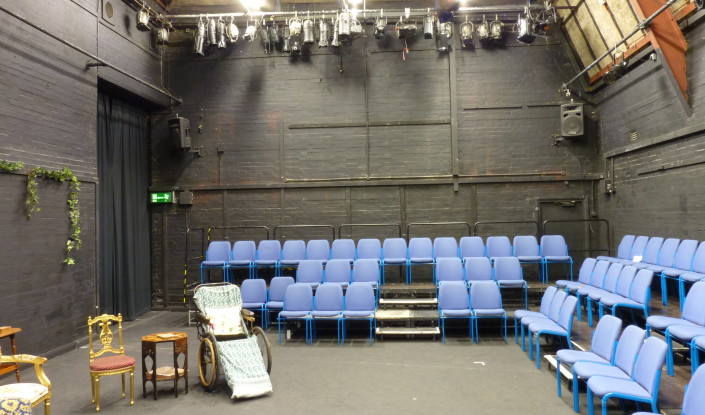 The Studio at the Questors Theatre, Ealing.
The Studio at the Questors Theatre, Ealing.
Platform stages
These usually consist of a raised rectangular platform at one end of a room. They can either have a level or raked sloping floor. The audience sit in rows facing the stage. Platform stages are often used in multi-purpose halls where theatre is only one of the space’s uses. Where the stage is open and without curtains, they are sometimes known as end stages or open stages.
Hippodromes
Hippodromes are similar to circuses and have a central circular arena surrounded by concentric tiered seating. Deep pits or low screens often separate the audience from the arena.
Open air theatres
These are outdoor theatres that do not have a roof, although sometimes parts of the stage or audience seating will be covered. These stages may make use of the natural light as it changes during the day, particularly sunset.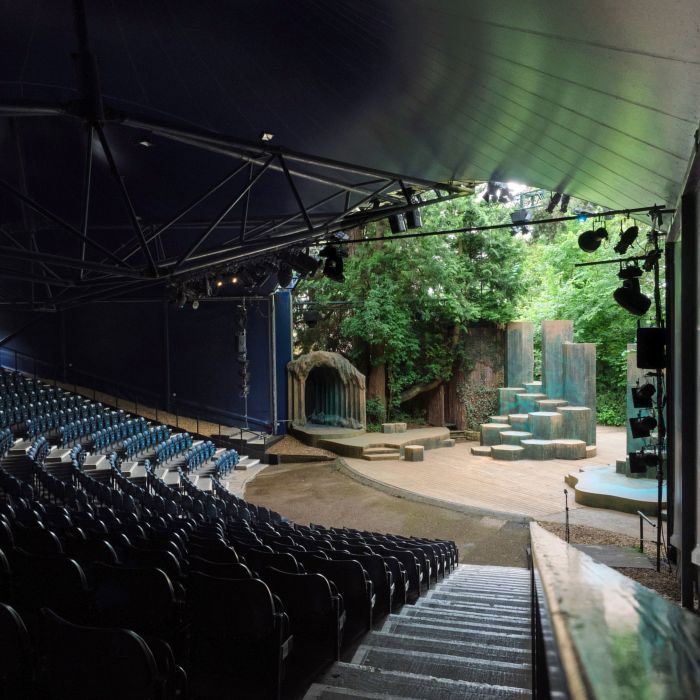
The auditorium of Rutland Open Air Theatre.
Site-specific theatre
Site-specific theatre is usually performed in a non-traditional theatre space such as a pub, home or warehouse, often reflecting the history, atmosphere or experiences of a particular location.
Promenade theatre
This involves the audience moving from place to place following the actors and performance.
Images: Ian Grundy, Theatres Trust.